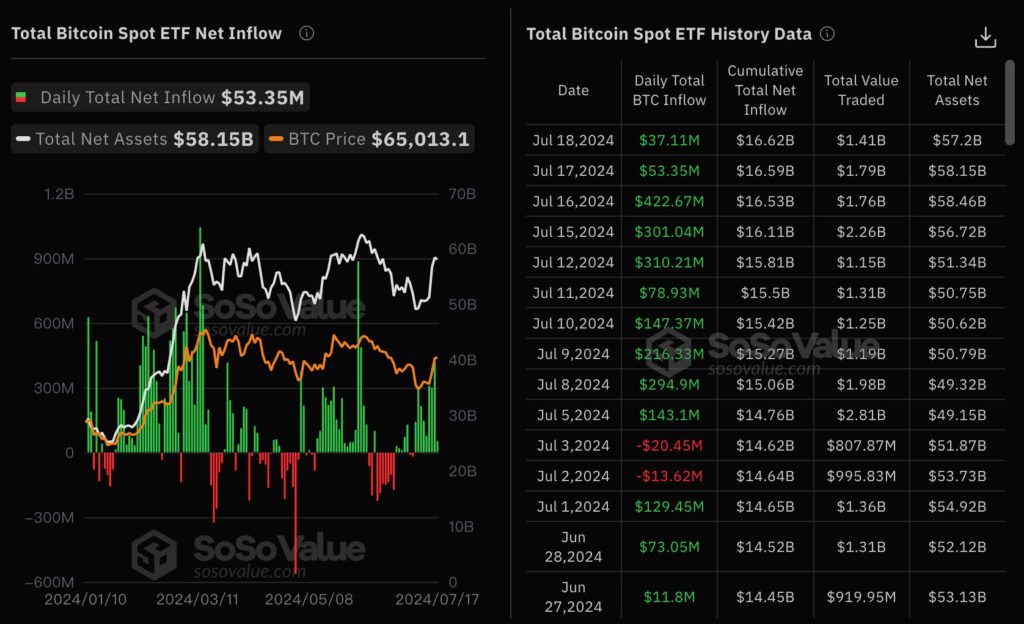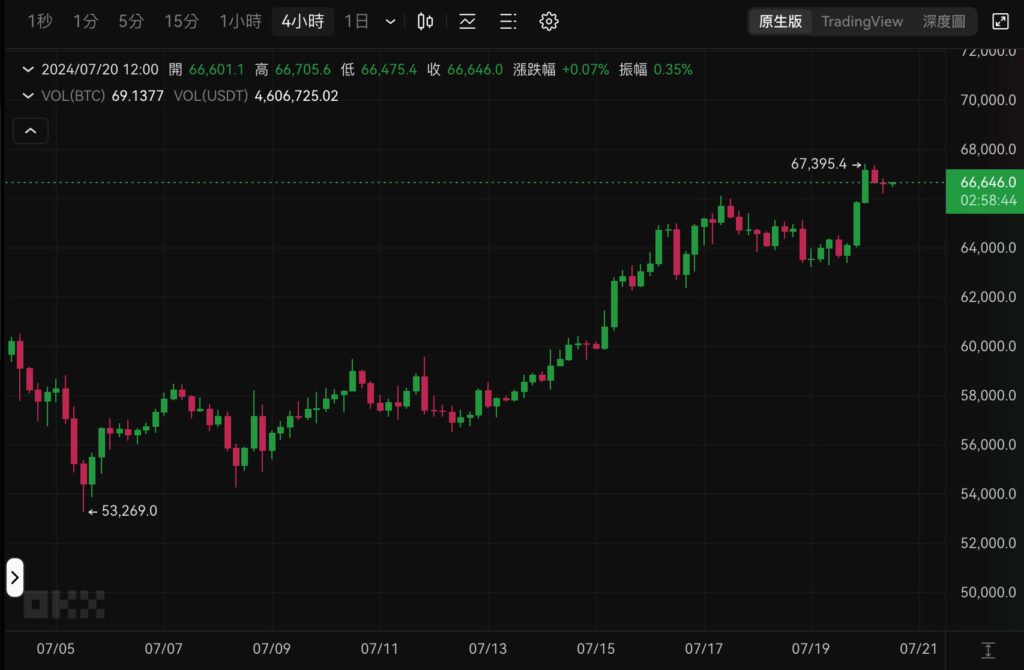According to SoSoValue data, Bitcoin spot ETFs have experienced net inflows for 10 consecutive days as of July 18, with a total inflow of nearly US$2 billion since July 5. (Currently, it seems that there is a high probability that 7/19 will also be a net inflow)

However, at the same time, although the price of Bitcoin has fluctuated and risen since July 5, it appears to be somewhat weak and does not feel like it is rising smoothly. This week, after fluctuating for a long time at 65,000 US dollars, it successfully reached 66,000 US dollars. What are the possible factors that affect the lack of Bitcoin buying?

Some Bitcoin spot ETF buyers are engaging in arbitrage
We know that not all buyers of Bitcoin spot ETFs are long-term investors or people with strong beliefs in Bitcoin. Many of these buyers may be institutional investors engaged in arbitrage operations, which may make the inflows into the Bitcoin spot ETF look larger than they actually are.
Cryptocurrency analyst Marcel Pechman pointed out that the main holders of IBIT and FBTC are hedge funds known for arbitrage trading, including Millennium Management, Schonfeld Strategy Advisors and Jane Street. These hedge funds are good at arbitrage trading and sell Bitcoin. At the same time as futures, buy the same spot ETF position.
Although there is no direct evidence that these hedge funds are executing arbitrage trades, Marcel Pechman said that these funds are not typical long-term holders, nor are they strong believers in Bitcoin’s value proposition. Additionally, open interest in Bitcoin futures on the Chicago Mercantile Exchange (CME) currently stands at $10.2 billion, up 23% from the previous week, indicating that many hedge funds are seeking gains from BTC futures contract premiums, which are currently at an annualized rate is 11%.
Therefore, the increase in CME BTC futures open interest partially explains the limited impact of net inflows into Bitcoin spot ETFs.
Improving inflation won’t help Bitcoin price
Marcel Pechman went on to point out that Bitcoin’s appeal is particularly valued in times of economic instability, such as a collapse in the purchasing power of fiat currency or a lack of trust in a government’s ability to repay debt. But now, the inflation situation in the United States has improved and the performance of national debt has become better, which means that everyone has considerable confidence in the economic policy of the United States.
As markets continue to hit new highs for the U.S. stock market, Bitcoin looks less attractive as an alternative store of value. Marcel Pechman believes that good economic data will have a negative impact on the price of Bitcoin, so even with the inflow of spot ETFs, the price of Bitcoin has not risen significantly.
German government sells 50,000 BTC
In addition, since June 19th, German government-related wallets have successively transferred nearly 50,000 bitcoins to exchanges and market makers such as Coinbase, Kraken, and Bitstamp for sale until they were completely cleared on July 13th. This is also believed to have caused It caused investor panic and was one of the main reasons why Bitcoin continued to fall in early July.
Mt.Gox potential selling pressure
Looking back on the 16th, the price of Bitcoin plummeted from US$65,000 to US$62,369. The flash crash was mainly caused by the news that the bankrupt Mt. Gox exchange transferred 95,000 Bitcoins to an unknown wallet, highlighting the market’s concern for Concerns over possible selling pressure from Mt. Gox repayment.
Financial analyst Jacob King once analyzed that up to 99% of creditors may choose to sell the Bitcoins they receive, because in the 10 years since Mt. Gox went bankrupt, the value of Bitcoin has soared 8,500%. This factor has made Mt. Gox's repayment has always caused market concerns; however, some analysts hold a different view and believe that the selling pressure will not be more serious than the market thinks.
In addition, due to the different cryptocurrency exchanges where creditors receive repayment, the actual time when they receive repayment will also be different. The entire repayment cycle is expected to last until October, which means that the selling pressure may continue until October. This may be one reason why Bitcoin has not been able to sustain its recent climb .








